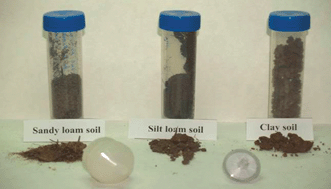The aim of this study was to develop a specific and highly sensitive method able to detect very low concentrations of Francisella tularensis in soil samples by real-time PCR (qPCR) with SYBR Green I. tul4gene, which encodes the 17-kDa protein (TUL4) in F. tularensis strains, was amplified using a LightCycler (LC) device. We achieved a detection limit of 0.69 fg of genomic DNA from F. tularensis subp. holarctica live vaccine strain (LVS), corresponding to a value less than 3.4 genome equivalents per reaction. The qPCR was shown to be specific, highly sensitive and reproducible. In addition, we evaluated 2 new methods for recovering bacteria from soil based on 1-step filtration using glass fiber filters and PVDF filters. These filtration methods enabled us to recover F. tularensis efficiently from soil samples. As few as 50 CFU per 0.5 g of soil were detected by qPCR. Capture enzyme-linked immunosorbent assay (cELISA) allowed us to detect and quantify the amount of bacteria recovered from soil by an immunological method. Although qPCR was more sensitive than cELISA, we did not observe substantial differences in the amount of bacteria quantified by both methods.

You have access to this article
 Please wait while we load your content...
Something went wrong. Try again?
Please wait while we load your content...
Something went wrong. Try again?


 Please wait while we load your content...
Please wait while we load your content...